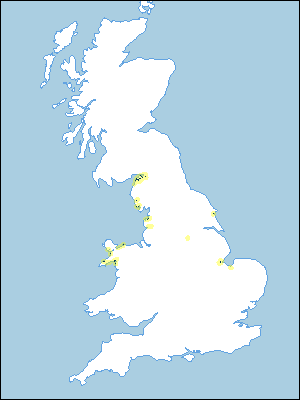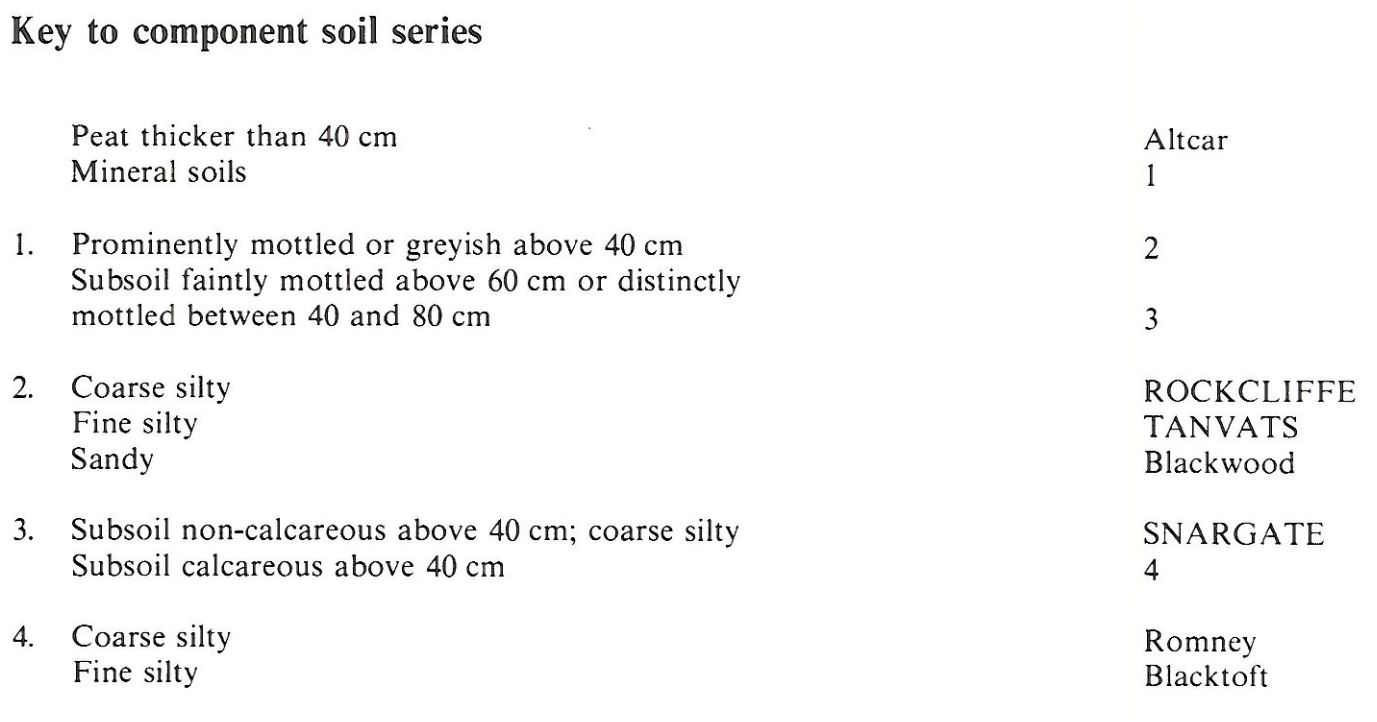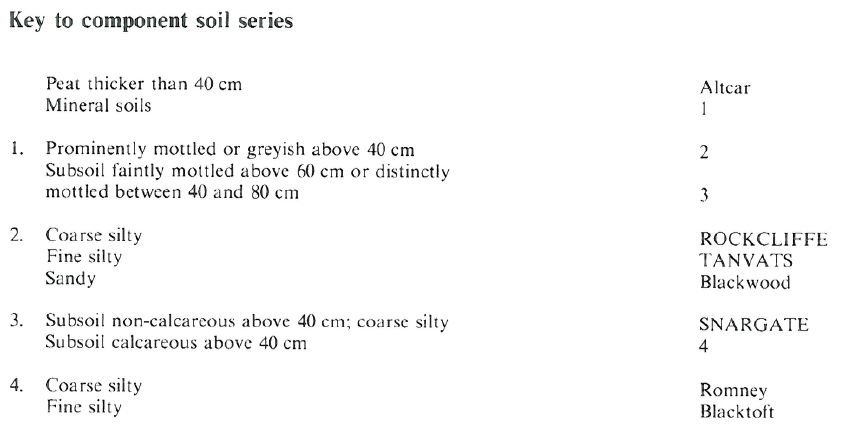
Soil Associations
0811d ROCKCLIFFE
Soil and site characteristics
Deep stoneless silty and fine sandy soils variably affected by groundwater depending on artificial drainage. Flat land.
Geology
Marine alluvium
Cropping and Land Use
Cereals and permanent and short term grassland in Cumbria, arable and horticultural crops in the Fens.
Component soil series
| Subgroup | Series name | Percentage | WRB 2006 link |
|---|---|---|---|
| 8.11 | ROCKCLIFFE | 50% | Fluvic Eutric Gleysols |
| 8.11 | TANVATS | 30% | Fluvic Eutric Gleysols |
| 5.62 | SNARGATE | 10% | Siltic Fluvic Eutric Gleysols |
Covers 186 km2 in England and Wales
Soilscapes Classification
| 21 |
Loamy and clayey soils of coastal flats with naturally high groundwater |
0811d ROCKCLIFFE
Detailed Description
The association occurs on reclaimed stoneless marine alluvium in Northern England, Wales and Lincolnshire. It contains coarse and fine silty typical alluvial gley soils, Rockcliffe and Tanvats series, and coarse silty gleyic brown alluvial soils, Snargate series. The main soils have a large content of silt or very fine sand and are strongly mottled in the subsoil. Rockcliffe and Snargate soils generally become sandier with depth, although in some places they have fine silty or alternating silty and sandy subsoil layers.
The association is inextensive in Lincolnshire covering 33 km² between Spalding and Boston on land reclaimed before about 1300 A.D., since when calcium carbonate has been leached from the upper layers of the soils. Snargate series is the more common soil than Rockcliffe series but with controlled drainage both soils now have a similar soil water regime. As well as Tanvats series, Romney and Blacktoft soils occur in places.
The association covers 115 km², principally beside the Solway Firth and near the lluddon estuary. It is dominated by Rockcliffe soils, the Snargate series being uncommon. The Tanvats series is extensive near Silloth where it occupies numerous former creeks, with Rockcliffe soils on the land between. Minor soils include Wallasea, Blackwood and Altcar series.
Soil Water Regime
The soils are well drained (Wetness Class I) in this intensively pumped area and respond well to underdrainage because of their permeable subsoil They contain large amounts of available water and are non-droughty for cereals, sugar beet and oilseed rape, but are normally slightly droughty for grass and potatoes. In the North of England Rockcliffe and Tanvats series are waterlogged for long periods in winter (Wetness Class III and IV) where undrained, but Snargate soils have better natural drainage (Wetness Class II). Both Rockcliffe and Snargate soils respond well to artificial drainage (Wetness Class II and I respectively) because of their permeable subsoil, despite drain silting and lack of adequate fall. The Tanvats series does not respond as well because of its weaker structure and less permeable subsoil, and it remains seasonally waterlogged (Wetness Class III). All the soils contain large amounts of available water and are not droughty for grass or other crops.
Cropping and Land Use
Dairying and the rearing and fattening of beef cattle and sheep are the principal enterprises. The soils are fertile and, where the Rockcliffe series is extensive, the land can be densely stocked and high yields of grass obtained. There is little cultivation, because of the climate, but cereals and root crops are grown locally on the drier soils. Soils that respond less well to drainage, particularly the Tanvats series, usually stay in permanent grass. Well managed grassland is very productive but there is considerable risk of poaching on the Rockcliffe and Snargate series and a serious risk of it on the Tanvats series. When cultivated, the soils need careful management because the large silt content renders them liable to structural damage in wet conditions, including surface capping after heavy rain which may impede the germination of crops. Harvesting can be difficult during wet seasons although normally there are approximately 40 machinery work days available for autumn cultivation.
0811d ROCKCLIFFE
Distribution Map
 |
Note that the yellow shading represents a buffer to highlight the location of very small areas of the association.
Keys to component soil series
Eastern Region
 |
Northern Region
 |
All information Copyright, Cranfield University © 2025
Citation: To use information from this web resource in your work, please cite this as follows:
Cranfield University 2025. The Soils Guide. Available: www.landis.org.uk. Cranfield University, UK. Last accessed 04/04/2025
